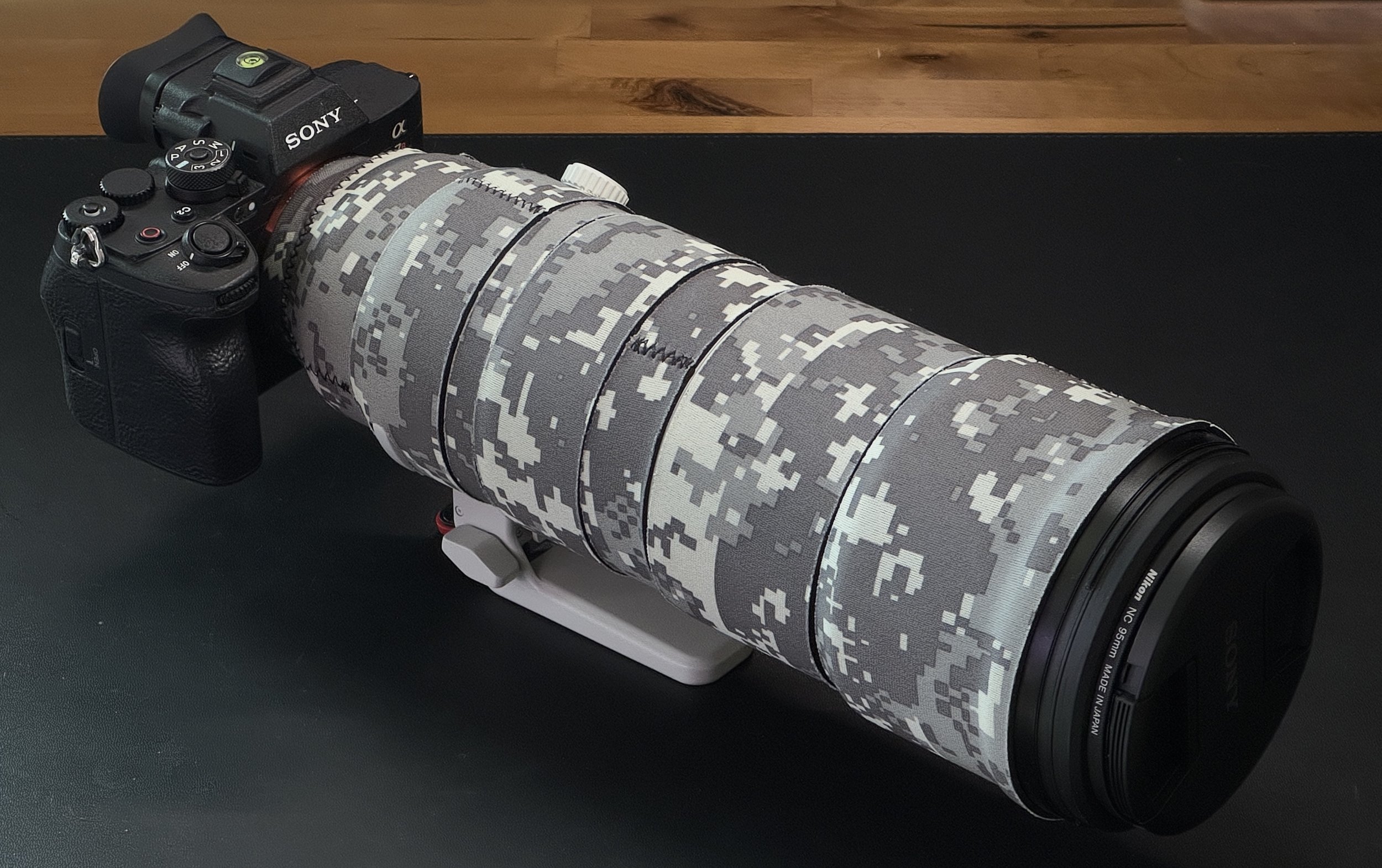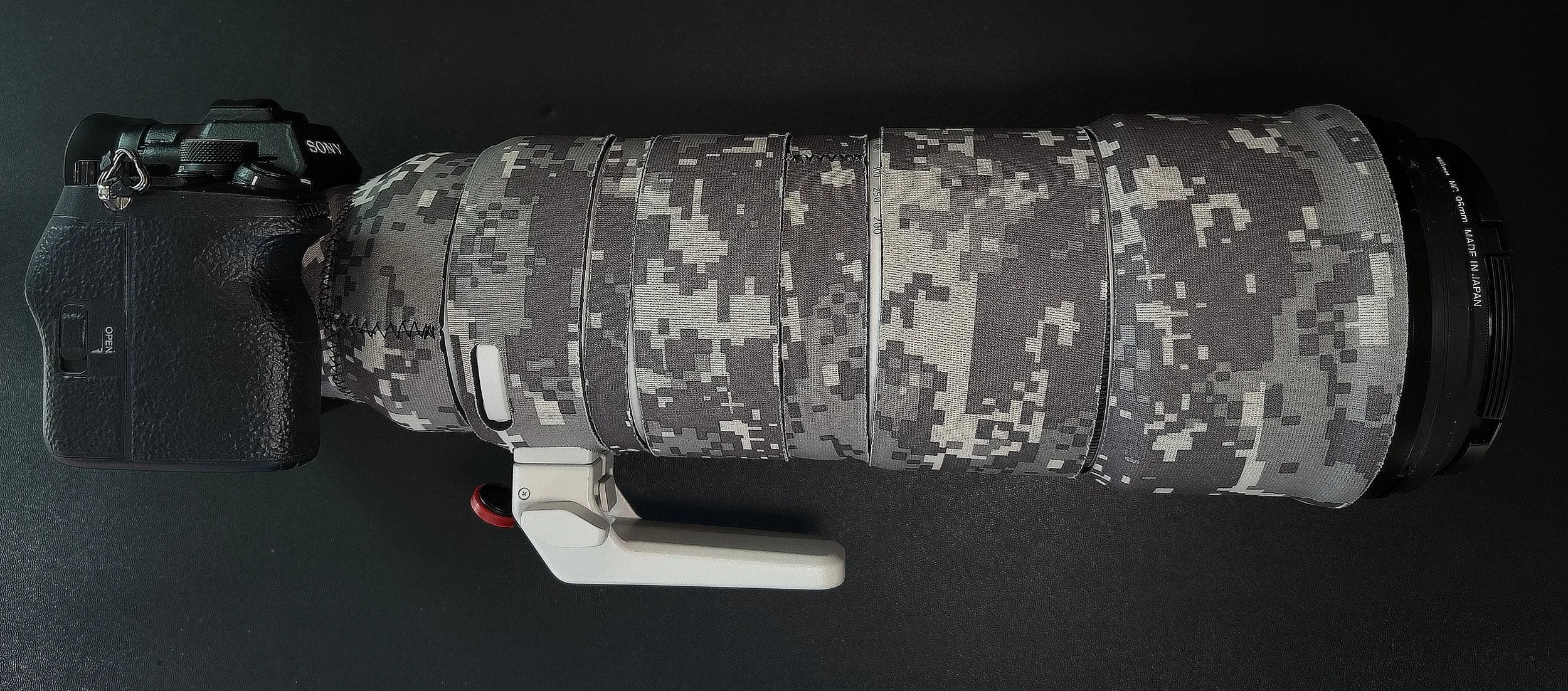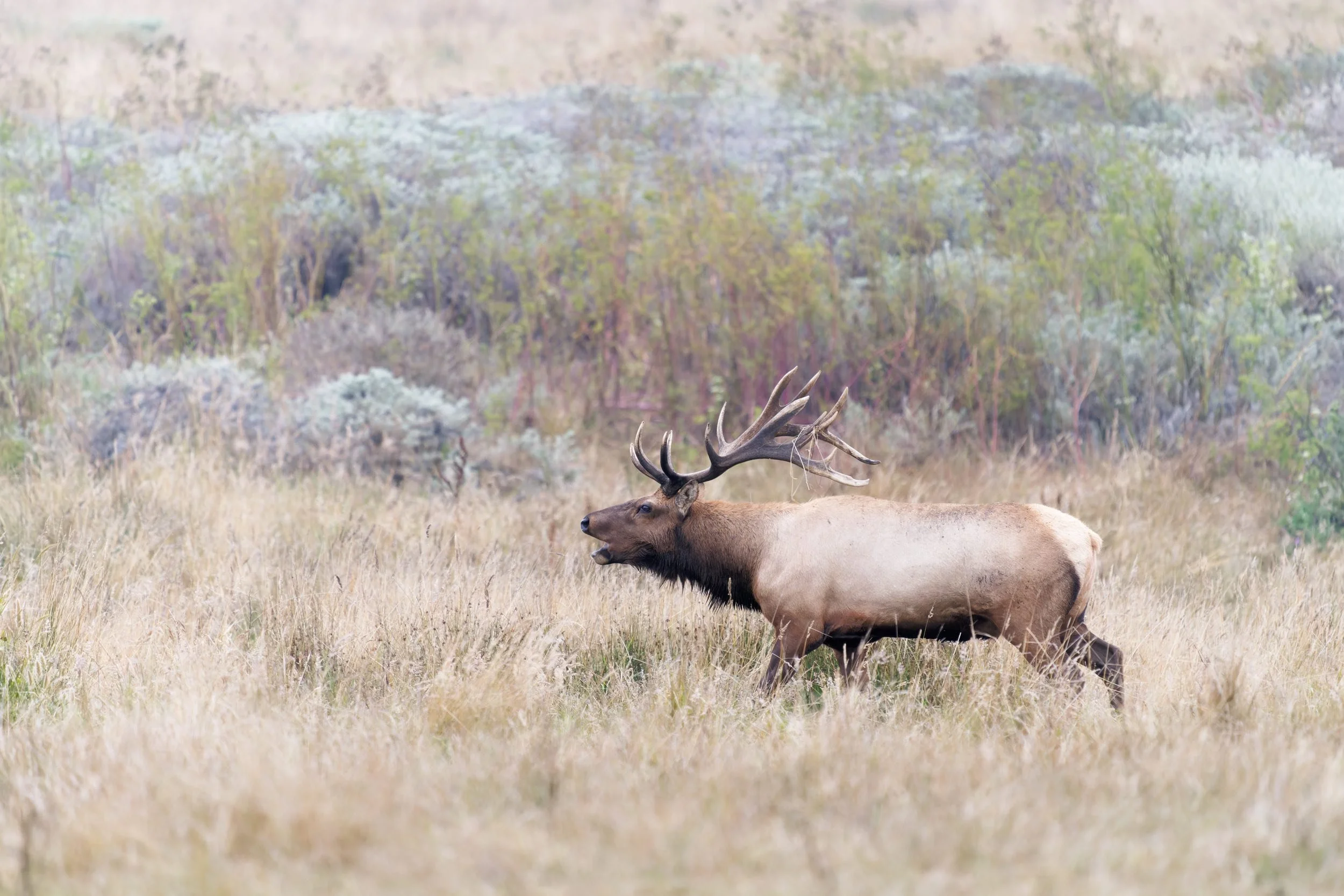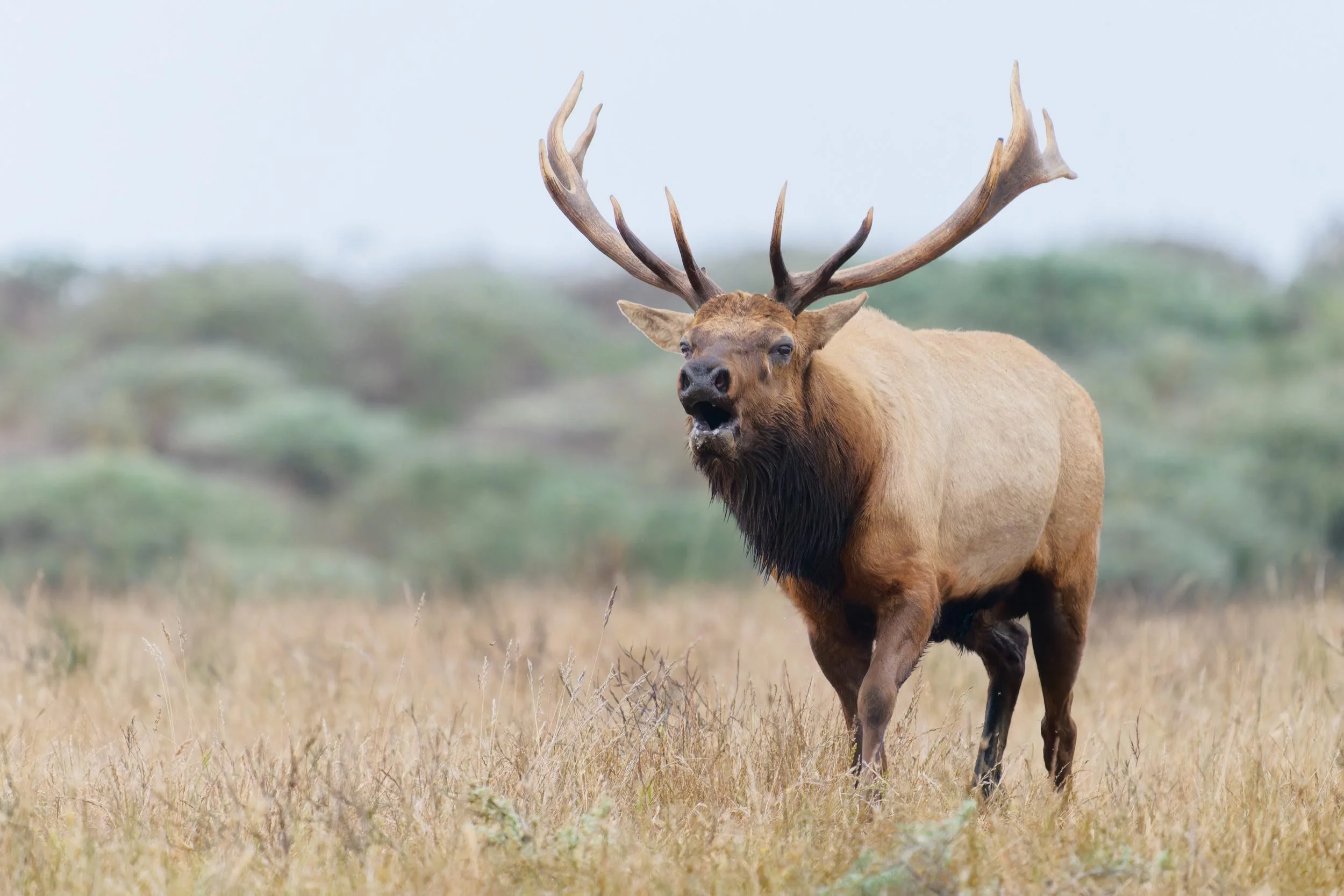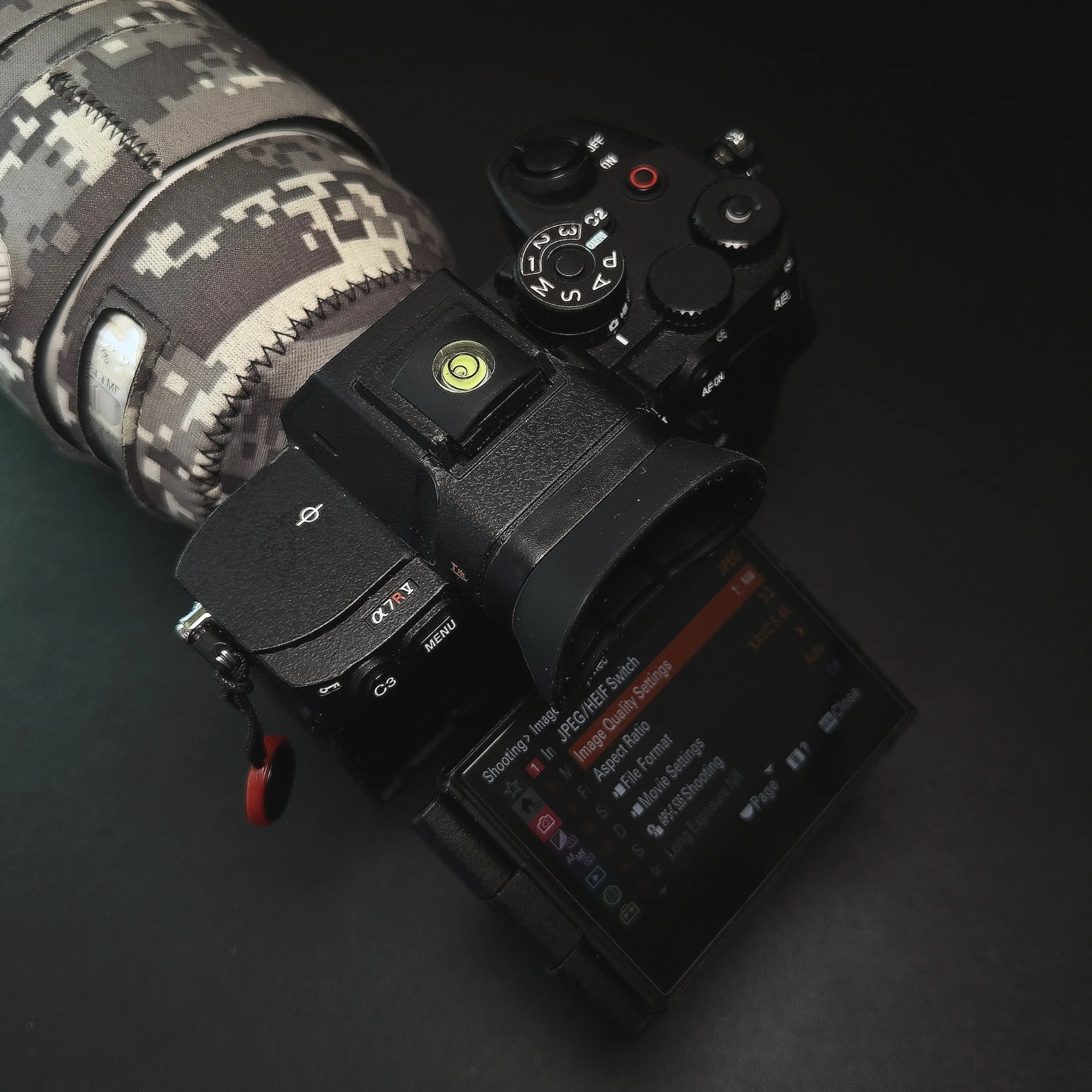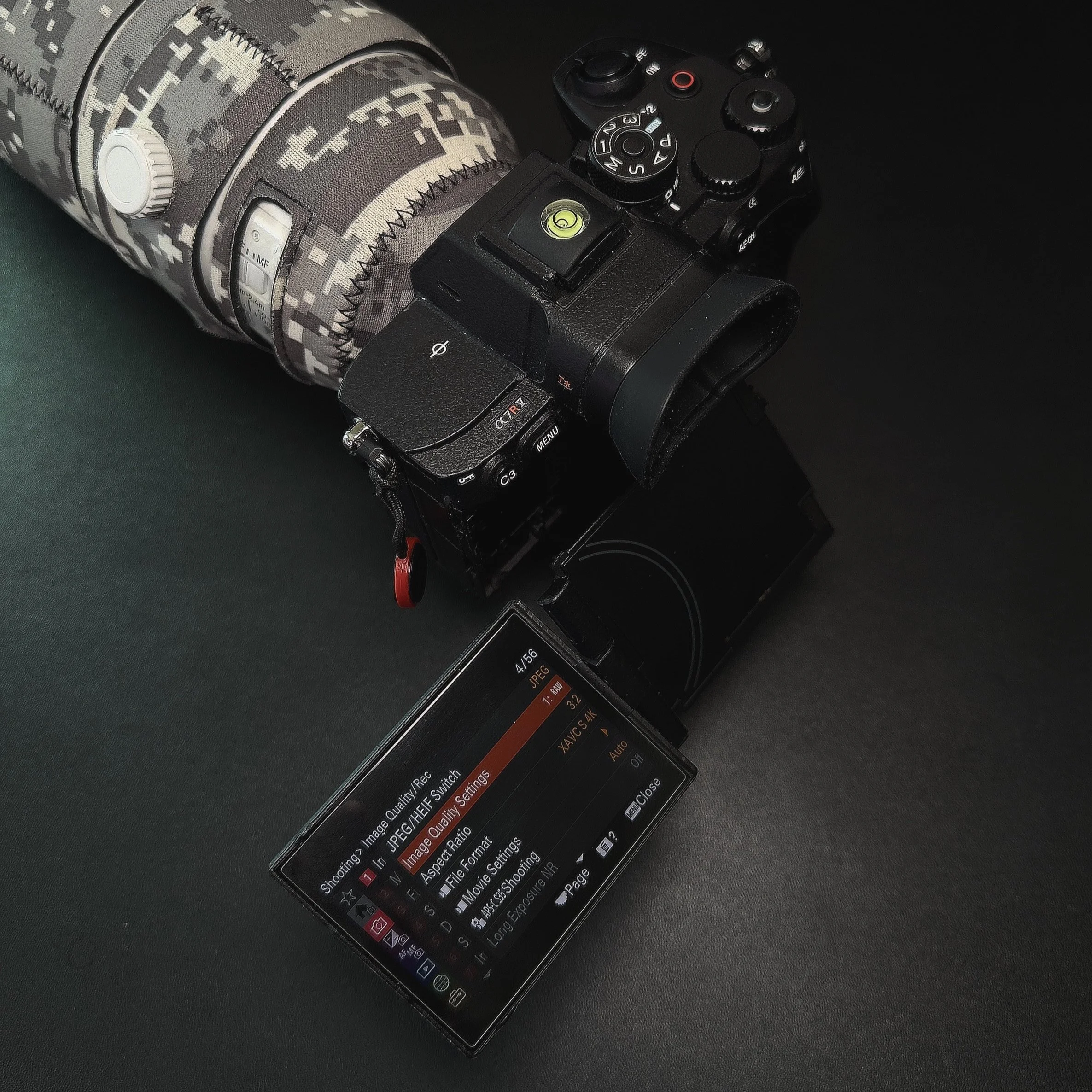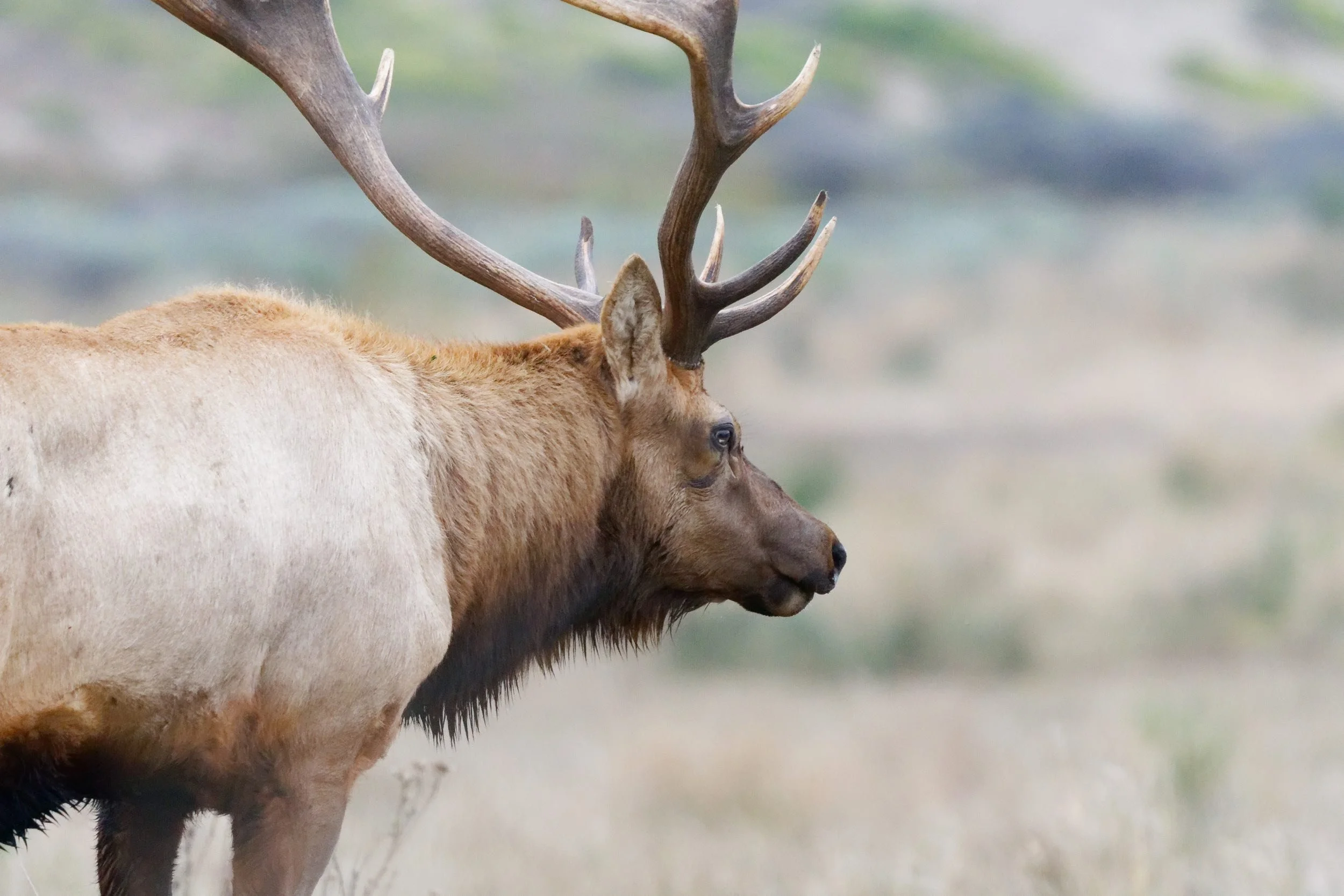Sony A7RV and FE 200-600 F5.6-6.3 G OSS Lens Review - For the Wildlife Shooter
Introduction
Higher megapixel cameras of the past were generally not the best choice for action sports and wildlife. Higher megapixel count generally meant slower throughput of data, and therefore slower frame rates, and less AF calculations per second versus cameras specifically built for sports and action. Those traits are still partially true today, with the exception of cameras like the Sony A1, Nikon Z9, Nikon Z8, which manage to mesh both higher MP with speed. The A7RV, on the other hand, sticks with a traditional bayer sensor, mechanical shutter and a 12 FPS frame rate. While perfectly adequate for wildlife, is it the best choice?
A7RV as a Wildlife Camera
The truth is, any camera in hand has potential to be a “wildlife camera”. But what I really want to know is: how well does this tool help or hinder the image capture process compared to other cameras? Wildlife are not often cooperative subjects. They are often farther away than I want them to be, move quickly and erratically, and bounce between light and shadow. All of these issues can be partially or fully mitigated by a camera that is 1. fast to focus, 2. can do so even with a cluttered scene, 3. when used with the right lens, provides sufficient subject resolving power (aka reach), and 4. has enough dynamic range to capture detail in the shadow and highlights.
I like using my lenses with a lens coat. Not for camouflage or to look cool (that ship has sailed), but to eliminate the need for a bean bag on a car windowsill, or set the camera on the floor of the car without worrying about it.
When I tested it a few years ago in Madagascar, I was originally very impressed with the A7RIV’s image quality, but I found AF performance to be a bit of a let-down in real-world use. When comparing to the stacked sensor offerings, It would seem like “case closed” what camera(s) I would choose, but I’ve been inclined to give the A7RV a shot for a couple of reasons. The first is that the A7RV still edges the current crop of stacked sensor cameras with a 61 megapixel sensor borrowed from the A7RIV. This sensor continues to amaze with its detail and dynamic range. It’s still one of the best sensors out there.
Tule elk. 600mm, ISO 1600, F/6.3, 1/200th
The second reason is that the A7RV now has what I believe is one of the best AF tracking systems in a modern camera I’ve tested to date, which can even detect and focus on insects, an industry first. What wildlife enthusiast doesn’t enjoy chasing a bug or too? All Sony had to do was say “bug detection” and I’d be interested.
Is it fast enough?
Let’s get it out of the way. For a serious wildlife photography enthusiast 12 FPS mechanical shutter is just on the edge of adequate for wildlife when compared to the competition. This may sound snobbish, but with multiple 20 or 30 FPS cameras on the market at a similar or lesser price, it’s not asking for too much. I am all about using the fast shutter speed on cameras on wildlife for two key reasons: 1. to capture a very specific moment in time so that I can properly pose the subject or capture eye reflections (which give a subject “life”) and 2. having a large number of photos to choose from to account for any focus failures, motion blur, etc. Someone that hates to cull photos and has a “get everything right in camera in a couple shots” mentality may not buy into this. For me, however, I want to use everything the camera can do to my advantage in getting the shot which includes fast frame rates and focusing. But needless to say, after using it extensively, I have no major qualms with the 12 FPS limit of the A7RV, and find it a adequate most of the time. Would I want a faster camera? Of course. But that’s only part of the story.
For things like birds in flight, it’s only fact that a higher frame rate camera will provide more chances to get the sharpest shot due to higher frame rates. But if the job is to yield the maximum amount of detail out of the subject from a distance, then the A7RV becomes one of the best options. For me, the detail one can achieve with the A7RV has less to do with printing big and a lot more to do with cropping. Which brings me to my next section about technique with the A7RV.
Myth: Higher megapixel cameras are harder to use than lower megapixel ones
I am pretty strict in my photo culling in that I almost never accept anything less than a tack sharp image. This is because many times I want the ability to crop in post if I’m reach limited. Cropping means any imperfections in the capture such as camera shake are going to be that much more obvious after the image is cropped, so it has to be sharp. The only time I’ll settle for less is if I have only one image to choose from and it has everything else going for it aesthetically. If I can take multiple nearly identical photos, then I want to choose the best one that avoids these issues.
Tule elk. 600mm, ISO 2000, F/6.3, 1/250th
With that said, when using this lens/body combo, it is not as easy as you would think to get tack sharp images at the pixel-level, particularly at lower shutter speeds. But whether that matters really depends on the viewing/print size, among other things, because that minute amount of motion blur won’t be evident until the image is cropped. With all else being equal, a photo with a high-res sensor that’s downsampled to a lower resolution will look identical to that of a lower megapixel camera, even if there is some minor motion blur that would be evident when viewing the higher resolution image at 1:1.
In other words, what I suspect people have noticed is that images taken with a higher megapixel camera occasionally lack sharpness because they’ve started pixel peeping, and the OIS systems are not mitigating camera shake that is noticeable at this scale. Stabilizing a sensor to compensate for shake at the pixel level is much taller order with a higher MP camera versus a lower one. Where these differences become most evident is when cropping - when any motion blur from camera shake is magnified.
Another reason I don’t think it has anything to do with something inherently unique about higher megapixel sensors is that I’ve used many micro four-thirds cameras that have equal pixel size to some of the higher megapixel full-frame cameras like this one. So, if it were true that having smaller and denser pixels makes it more difficult to capture a stabilized image, why do MFT cameras have some of the best OIS performance in the business and suffer none of the issues of so-called “high resolution sensors”?
600mm, ISO 2500, F/6.3, 1/500th
In my time thus far with the A7RV and 200-600, I found I had to shoot in burst and capture at least three or four frames per subject while practice good technique to guarantee the sharpest image possible out of the setup. This is pretty consistent with what I’ve read in the forums, which is that the OIS is just OK with this lens, if your standard is tack sharpness. It’s certainly nowhere near some other rigs I have used which could handle as slow as 1/20th of a second exposures without noticing hardly any effect of camera shake. I suspect compromises were made in the OIS department to meet a price point with the 200-600. It’s not bad, especially for a 600mm lens, but it’s also not class-leading. Given it’s a bigger lens and that the OIS doesn’t do miracles, I think this lens is a good candidate for a monopod or tripod, when the situation allows.
The good news is that when everything works out as far as OIS is concerned, the image quality is really, really good. To my eye, the lens does not have the same level of acuity and contrast as some primes I’ve used, but we are also talking about a multiple thousand dollar difference, and this lens is getting you easily 80-85% of the way there at a fair price point.
At this point, it’s no big mystery what the 61-megapixel sensor on the A7R can do. It’s the same sensor that’s been in the A7RIV, but the level of detail is still astonishing. The elk in the shot below was captured at 600mm, cropped, and then cropped again. The second image would be my choice for final framing, but the fact that the image still has a lot of detail after being cropped yet again demonstrates the possibilities. It’s essentially giving you an APS-C and 35mm format camera in one. There are some cameras I wouldn’t even bother with this type of image because the subject is just too small in frame, but that’s not the case with the A7RV. Those that like to “crop until it hurts” will notice a lot of extra leverage with this sensor.
Tule elk bull with testosterone raging. The next two shots below demonstrate the detail in the image above after being cropped. This first one above is pretty ho-hum and not something I would share, as the subject is a bit too small in frame for my liking. But the cropped image below is something I’d share. 600mm, ISO 1250, F/6.3, 1/200th
Notes about the Sony A7RV Body
I generally don’t have a lot to say about the body, other than it is very similar to other Sony bodies released over the last 10 years. Sony sticks to the same basic formula, and I could say that for the most part, it works. The general layout is familiar, but the buttons are organized a bit more logically than bodies released in the past, and the grip feels completely adequate to me, even with a big lens like the 200-600. Buttons are a bit bigger and easier to locate and press. The EVF is generally excellent to use, but I will say that I liked the EVF in the Canon R3 a bit better (more natural hues and an optical viewfinder “look”). Where Sony knocked it out of the park is the flip screen. This screen fully articulates AND tilts, and somehow does that without making the camera unnecessarily huge. All I can say is that they better put this LCD screen design on every camera moving forward. It’s the best for every use case - shooting overhead or down low, selfie mode, etc. As far as battery life is concerned, I’d say it’s middle pack and realistically I can get a day of mixed use out of it, which is totally acceptable. Some the prior Sony bodies had even better longevity with the Z battery, maybe taking me to 1.5 to 2 days. I think they are getting a little more power-hungry.
Sony clearly got tired of trying to satisfy the flip screen…
…or the tilt screen faithful, so they went with both.
Focus Tracking and Speed
Turning our attention back to the focusing performance, my experience with the focus tracking is that it’s one of the key highlights of this camera. While I don’t love everything about the camera, I do love how well it predictably tracks subjects, picks out small species in busy background and foreground environments, and just how intuitive RealTime Tracking AF is to use. I think this is one of the big reasons to go with Sony. I may appreciate aspects of other camera brands, but I know what i’m getting with Sony AF, and it’s mostly rock solid.
For me, I have F3 button set to cycle the Focus Areas, which I’ve limited to the ones I use: Tracking Spot Small, Spot Small, Zone, and Wide. Then I have C1 set to cycle through the detection modes (i.e., human vs animal, bird, insect, etc) and then C3 to turn Subject AF off or on. With one press of these buttons I’m usually a second or two away from being fully setup for different subjects. From time to time, I’ll also use the Recall Custom Functions button and use one of the lens buttons to trigger “BIF mode” on the fly - a.k.a., a pre-set of 1/2500th, Auto ISO, Zone, Bird detection, Matrix metering. This complements my style of hiking and quickly changing settings to capture found subjects that aren’t going to stick around long.
Sphinx Moth in flight. 600mm, ISO 400, F/6.3, 1/3200th
One other aspect to discuss regarding focus is focusing speed. While I know the newest Sony lenses are incredibly fast to focus, this 2019 lens is not the fastest to focus. Though this would have been called lightning fast 10 years ago, compared to Sony’s latest, the 200-600 takes a noticeable amount of time for the AF motors to scan the focus range. The ramifications of this are somewhat apparent when capturing faster subjects, because the lens has to be able to keep up with the movements. I’ve seen evidence of it taking a frame or two to finally catch up with a subject moving closer or farther away. I can’t be conclusive in my claims that it’s entirely the lens’ fault, because the body itself contributes to focusing speed in terms of AF calculations per second, which is much lower than say, the 120 FPS AF/AE read speed of the A1. In real-world usage, it’s plenty fast enough to keep up with fast moving subjects like most birds in flight (in good lighting), but it would not be my first choice for that. Besides the fact that it focuses a little slower than newer lenses, F/6.3 can push the ISOs into unacceptable territory (for me) in all but the best lighting conditions when shooting BIF.
The A7RV also sometimes has a tendency to latch onto backgrounds or foregrounds and not want to give up. What’s strange to me about this behavior is that the camera isn’t hunting, it’s just staying stuck out of focus. What I find helps is nudging the camera in the right direction using direct manual focus (DMF), as does focusing on some blades of grass in the same focal plane as the subject. This is not an entirely unique phenomenon for a camera/lens combo, but it does happen a bit more often than I’d like. I’ll continue to dive into settings to see whether anything else helps.
I haven’t had a lot of opportunities with flying birds yet this year, which by many seems to be the gold standard by which camera AF systems are judged, but the sphinx moths were out in force and provided some decent opportunities for action shots. Needless to say, the insect tracking AF was helpful (though not perfect in this case) and the camera was plenty capable to capture its erratic movements. The shots below were typically at F/6.3 or F/8 with 1/2500th of a second exposures. So far, my impressions are positive.
Sphinx Moth in flight. 600mm, ISO 400, F/6.3, 1/3200th
While I might be sounding critical, at the end of the day, the AF performance is really quite special with this camera, and definitely better than most cameras could handle in the not so distant past. I love that with insects I can let the camera do the work and frame the photo properly while taking the photo as opposed to cropping in post to get the desired outcome. For instance, with the sphinx moths above, typically I'd focus on the flower and hope the insect is within the same plane of focus, but with the A7RV insect detect I no longer have to do it that way. It’s a master at staying glued to the subject (or its eyes) detecting bodies and heads, and it is generally very accurate.
It is also very predictive. Even if the tracking square doesn’t immediately detect that the bird or animal, odds are the camera will still start putting focus squares on that area of the frame and ignore everything else. What this all equates to for me is a camera that gets out of the way from the creative process and allows me to focus on framing.
A pretty standard fare portrait of a song sparrow below, but not only is this image already cropped by 50%, the one below it shows just how much detail is present at 1:1. 600mm, ISO 640, F/6.3 1/3200th
Final notes
To get into Sony wildlife, your lens choices include the FE 200-600 G, the FE 100-400 F/4.5-5.6 GM, the 5 figure GM 400/600 primes, or an aftermarket super telephoto. I’ve used the 100-400 GM in the past, and strongly favor the 200-600’s internal focus and extra reach, but I do prefer the former’s close focus ability, and anecdotally, I’d say the 100-400 is a better lens optically at equivalent focal lengths. The 200-600 is not a “no compromises” lens, but it is a solid choice nonetheless, and the only game in town currently to reach 600mm on an “affordable” Sony OEM lens without using teleconverters. I’m happy to say that my copy is tack sharp, and the bokeh quality is pleasing to my eye. I have no reservations recommending this lens for the pursuit of high-quality wildlife images.
The A7RV has a unique place in wildlife work. It isn’t the fastest camera for the task, but it has no problem resolving outstanding detail and making deep crops possible which makes it a “different” tool in the toolbox. Even if I don’t have a hundred identical frames to choose from as I would with a stacked sensor camera, to an extent, the ability to crop an A7RV provides an alternate advantage, which is that I can crop without any real penalty. In many cases, it’s complete overkill shooting at 20+ FPS, and I’d rather have one super detailed photo I can crop versus 30+ less detailed photos where I’m stuck with the framing. In many cases the AF performance also makes up for what it lacks in speed.
Which leads me to my conclusion, which is that I enjoy working with the A7RV on wildlife more than I thought I would. The AF system makes me smile, the interface is hugely customizable, and the image quality, at least to my eyes, is outstanding.
Additional image samples
437mm, ISO 3200,F/6.3, 1/500th
A rare site for California - a pronghorn antelope, 600mm, ISO 160, F/6.3, 1/640th (deep crop)
600mm, ISO 400, F/8, 1/600th (deep crop)
600mm, ISO 400, F/6.3, 1/1000th
Sphinx moth. 600mm, ISO 400, F/6.3, 1/2500th
Sphinx moth. 600mm, ISO 400, F/6.3, 1/2500th
Sphinx moth. 600mm, ISO 400, F/6.3, 1/2500th

